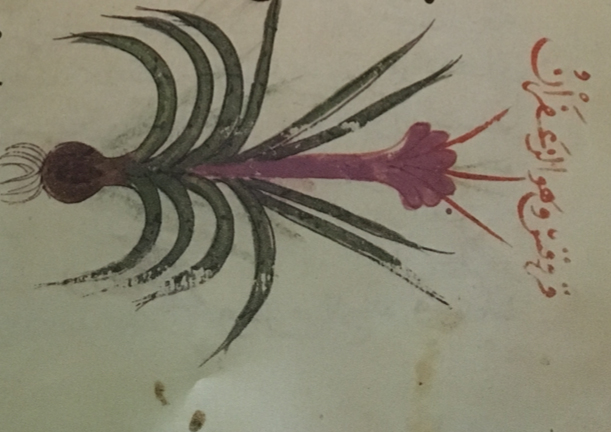This most precious of spices is known in Arabic as za’farān (زعفران), which is the origin of our English word.
In cooking it was used as an aromatic and, more frequently, to colour dishes, in which case it tended to be added at the end of the cooking process. It is also found in incense recipes and perfumes. The 13th-century anonyous Andalusian treatise recommends using saffron in pickled dishes and those with poultry that include vinegar and murrī.
It was also commonly referred to as kurkum, which actually denotes turmeric (Curcuma longa, a plant from the ginger family). The confusion between the two may also explain why kurkum does not appear in the cookery books. Then as now, there were complaints about unscrupulous market vendors adulterating saffron with turmeric, which, itself, was also often corrupted by mixing in ground pomegranate skins! According to some scholars, kurkum was the root of saffron. Medicinally, it was thought to strengthen the stomach, heart, liver, and complexion. However, physicians warned that it could also cause headaches, and the fact that it is poisonous — even lethal — at large doses. According to the pharmacologist al-Samarqandī (d. 1222), saffron enhances digestion, but cuts appetite and is harmful to the brain. It was also said to be an anaesthetic and diuretic. Because of its aphrodisiacal properties, the Prophet is said to have forbidden the wearing of clothes dyed with saffron for pilgrims who were in a state of ritual purity, and thus debarred from sexual activity.

